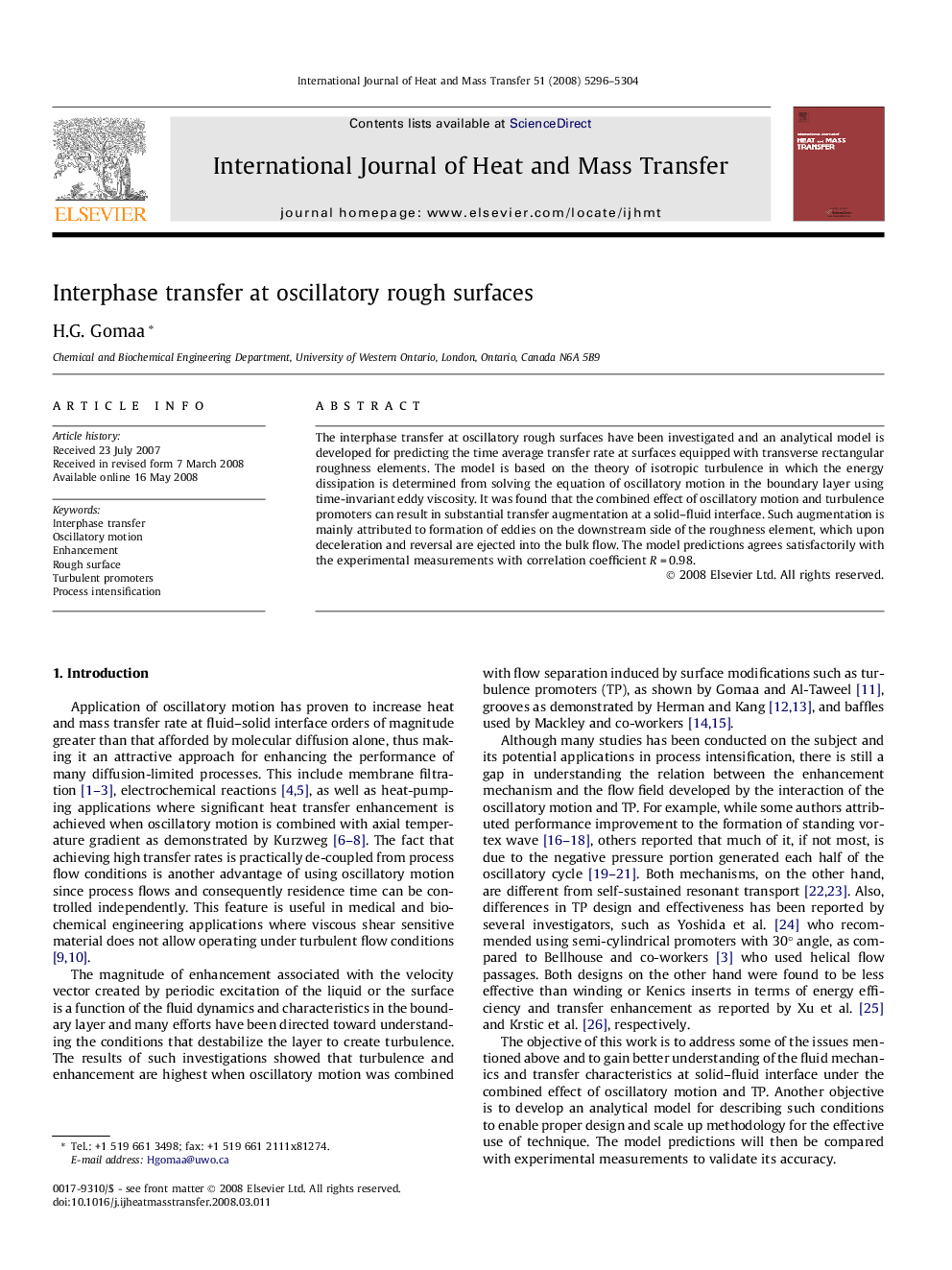| Article ID | Journal | Published Year | Pages | File Type |
|---|---|---|---|---|
| 662322 | International Journal of Heat and Mass Transfer | 2008 | 9 Pages |
The interphase transfer at oscillatory rough surfaces have been investigated and an analytical model is developed for predicting the time average transfer rate at surfaces equipped with transverse rectangular roughness elements. The model is based on the theory of isotropic turbulence in which the energy dissipation is determined from solving the equation of oscillatory motion in the boundary layer using time-invariant eddy viscosity. It was found that the combined effect of oscillatory motion and turbulence promoters can result in substantial transfer augmentation at a solid–fluid interface. Such augmentation is mainly attributed to formation of eddies on the downstream side of the roughness element, which upon deceleration and reversal are ejected into the bulk flow. The model predictions agrees satisfactorily with the experimental measurements with correlation coefficient R = 0.98.
